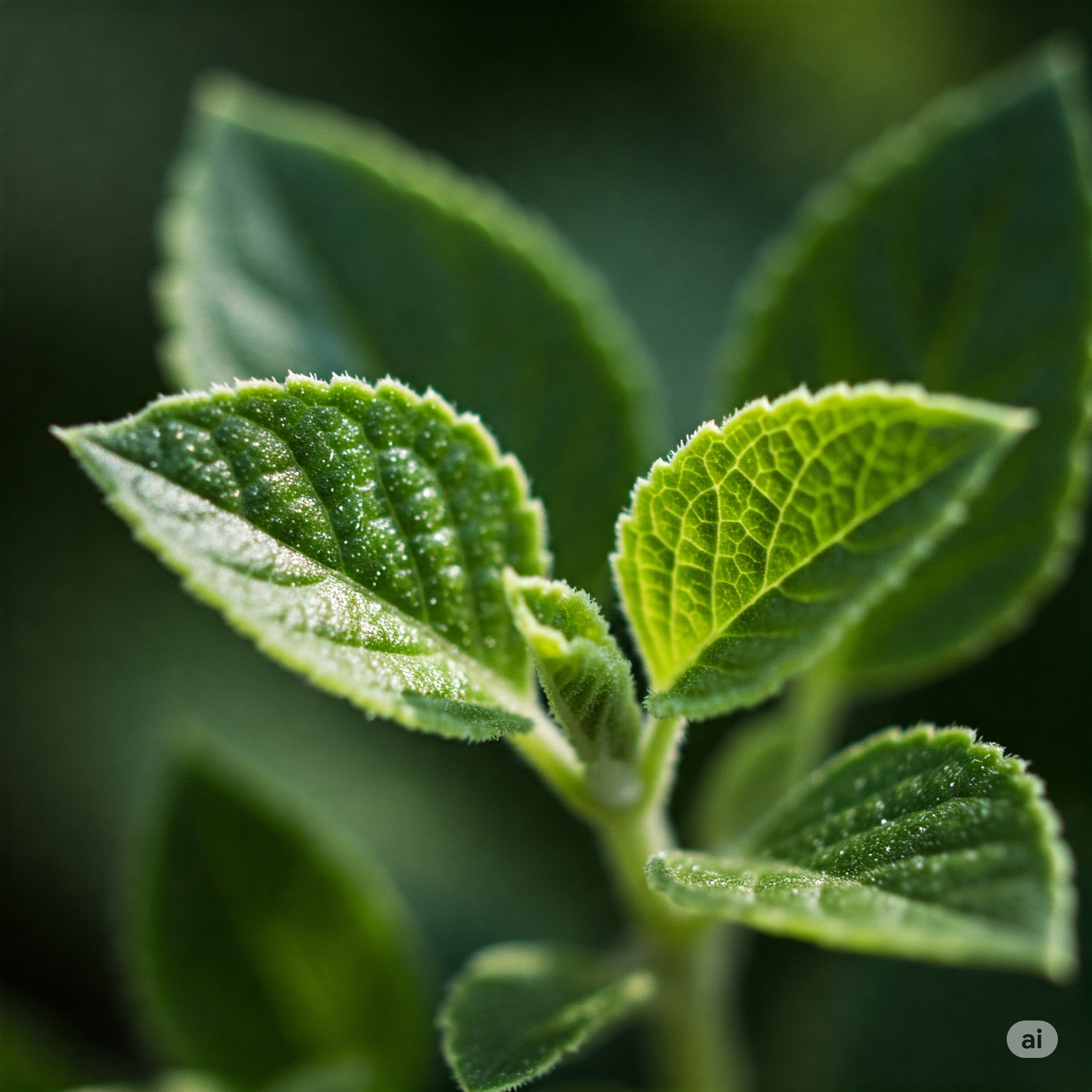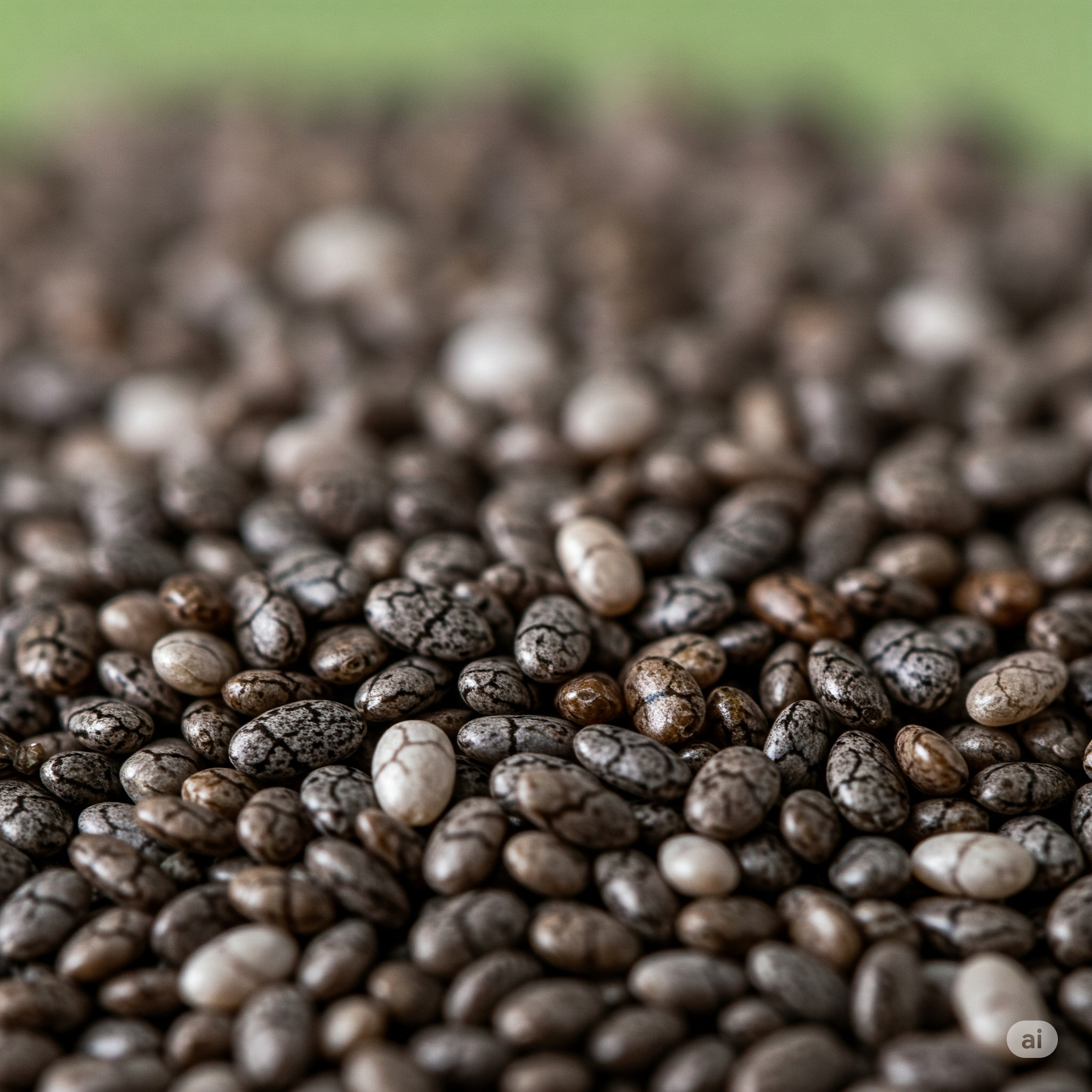Chia seed, scientifically Salvia hispanica L., is the seed of an annual herbaceous plant belonging to the mint family (Lamiaceae). Historically originating from Central America, this plant was used as an important source of food and energy, especially in the Aztec and Mayan civilizations. Today, chia seed, which is considered a functional food, attracts attention with its nutrient-rich content and various uses. Its agricultural characteristics, growing conditions, industrial potential, and health effects have been the subject of scientific research, and for this reason, it has become a strategic product in the modern agriculture and food sector.
Botanical Characteristics
The chia plant is an annual herb that grows between 1 and 1.5 meters tall, with stems covered with hairs. The stem structure is usually quadrangular and grows in a wavy form. Leaves are oppositely arranged, ovate, and toothed at the edges. Since the photosynthetic activity of the plant is high, it grows better in environments with efficient light. Chia is a short-day plant, and the flowering period depends on the length of the day.
Leaves: Leaves are 4 to 8 cm long, green in color, and covered with hairs. The leaves are arranged opposite each other and contain dense sweat glands, providing resistance to arid environments.

Leaves of the Chia Plant (Created with Artificial Intelligence.)
Flowers: Flowers are usually blue-violet, rarely white. The flowers, arranged in terminal spikes, are hermaphroditic and pollinated by insects.

Flower Image of Chia Plant (Created with Artificial Intelligence.)
Seeds: Chia seeds are oval-shaped, about 1 mm in diameter and 2 mm long. Their color can vary from white to black. Their surfaces are shiny and patterned. Thanks to their mucilage-containing structure, they take gel form when in contact with water.

Chia Seeds (Created with Artificial Intelligence)
Climate and Soil Requirements
Chia plants thrive better in warmer climatic conditions. Although the optimum growing temperature varies between 20-30 °C, it is very sensitive to frost. The ideal soil temperature for germination is between 15-20 °C. In terms of soil, permeable, light clay or sandy soils should be preferred. The pH of the soil should generally be between 6 and 8.
Irrigation and Hardiness
The plant is moderately drought-tolerant and needs regular watering, especially during germination and initial development. However, it requires careful watering as overwatering can lead to root rot and fungal infections. Thanks to its developed root system, it has high water accessibility.
Cultivation Process
Seeds are sown directly in the field. Sowing time is in the spring months when the risk of frost has passed. Sowing is done with 60-70 cm between rows and 30-40 cm between plants. The germination period varies between 7-14 days. The plant reaches harvest maturity in 90-150 days. Harvesting is done when the seed capsules turn brown. After drying, the seeds are separated by mechanical or manual methods.
Production and Ecological Suitability in Türkiye
Although the cultivation of the chia plant in Türkiye is limited, research has intensified in recent years with increasing interest. The Mediterranean and Aegean regions are suitable for chia cultivation in terms of climate and soil characteristics. The long and hot summers in these regions provide the necessary photoperiod conditions for chia to mature.
Nutritional Value
Chia seeds have a rich nutrient profile. They contain 30-40 percent fat, most of which is polyunsaturated fatty acids (especially alpha-linolenic acid). It also contains about 15-25% protein. It is rich in soluble and insoluble dietary fiber. It is valuable in minerals such as calcium, magnesium, iron, zinc, and potassium, as well as vitamin E and various phenolic compounds.
Areas of Use
Chia seeds have traditionally been used as a food supplement. Today, it is widely used as a binding agent instead of eggs, especially in vegan and gluten-free diets. It is also used as an additive in products such as fruit juice, yogurt, bread, and snack bars. It provides a feeling of satiety by increasing the volume of the stomach as it takes the consistency of a gel when it comes into contact with water.
Benefits
The high fiber content of chia seeds can help regulate the digestive system. It may support cardiovascular health as it is rich in omega-3 fatty acids. Thanks to its antioxidant components, it has been reported to have protective effects against free radicals. It may also contribute to blood sugar regulation.
Harm
Although chia seeds are generally considered safe, excessive consumption can cause stomach upset or intestinal obstruction in some individuals. At the same time, the high fiber content can lead to gastrointestinal problems, especially when not drinking enough fluids. Although allergic reactions are rarely reported, caution is advised for individuals with sensitivities.
Industrial and Economic Potential
Chia seeds have become a strategic agricultural product with increasing trends in healthy eating worldwide. Its production volume has increased in many countries due to its high commercial value. It has a high potential for use in functional food, dietary products, and the cosmetics industry. In addition, its biodegradable gel structure allows it to be used in drug carrier systems. For Türkiye, it is considered a product that can offer an alternative source of income and finds a place in rural development projects.


